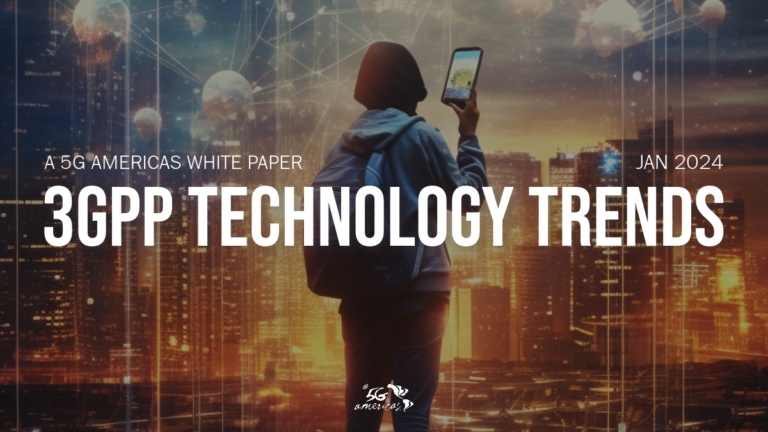In the ever-evolving communications field, the 3rd Generation Partnership Project (3GPP) is playing a key role in innovating and advancing connectivity and communication in an interconnected world. While 5G networks have already begun a transformative journey for many people around the world, 3GPP members are working tirelessly to take these networks to an even higher level with the development of 5G-Advanced. 5G-Advanced, the natural successor to 5G, brings an incredible evolution to the connected experience. With faster data speeds, reduced latency, and ultra-reliability, 5G-Advanced promises enormous opportunities for industry, consumers, and the broader ecosystem. This white paper takes a deep dive into the nitty-gritty of 5G-Advanced, highlighting the critical technologies, features, and use cases that will define the coming era of wireless communications.
3GPP Release (Rel)-17 was introduced in June 2022, heralding significant enhancements to existing applications, complemented by advances in data speeds, reduced latency, and ultra-reliability. These include 5G New Radio (NR) Multiple In Multiple Out (MIMO), improved uplink coverage, enhanced sidelink communication, positioning enhancements, UE power savings, and Ultra Reliable Low Latency Communication (URLLC). )/includes Industrial Internet of Things (IIoT) enhancements. , integrated access and backhaul (IAB), and non-terrestrial networks (NTN). Collectively, these enhancements will drive the comprehensive development of 5G networks, driving advances in areas such as MIMO technology, power efficiency, communications reliability, positioning capabilities, and support for non-terrestrial networks. Additionally, expanded spectrum utilization designed to enhance coverage has contributed to the emergence of a more versatile and efficient 5G ecosystem with 3GPP Rel-17. 5G NR introduces important features that enhance network capabilities and capabilities, making 3GPP Rel-17 a pivotal milestone in the evolution of cellular networks. This document uses the terms NR Rel-17, 3GPP Rel-17, and Rel-17 interchangeably.
The evolution of 3GPP technology trends continues in Rel-18, exploring cutting-edge topics such as the metaverse. The metaverse is a dynamic concept in the realm of digital technology that transcends the constraints of the physical world to provide immersive digital experiences that seamlessly interconnect people, places, objects, and information in real time. In addition to the Metaverse, the RedCap (Reduced Capability) device was also first introduced in his 3GPP Rel-17. This supports a wide variety of use cases and lays the foundation for further specification work on NR RedCap. This work includes applications like wearables (smartwatches, wearable medical devices, augmented reality (AR)/VR goggles, industrial wireless sensors, video surveillance, etc.). Planned RedCap device enhancements in 3GPP Rel-18 aim to improve these capabilities and extend them into new areas, including smart grid technologies. 3GPP Rel-18 also explores features such as Joint Communications and Sensing (JCAS), which integrates communication and sensing functions within the same system or network.
While Rel-17 expanded the scope of ML (machine learning) and provided an explanation of the principles of radio access network (RAN) intelligence enabled by ML, Rel-18 introduces new AI/ML specifications. Extended to wireless air interface. We will focus on this area of the air interface, specifically working on ML solutions that require interaction between the network infrastructure and user equipment. Future AI/ML use cases will be addressed in Rel-19’s air interface, RAN, and system architecture. As we approach Rel-20, 6G will be studied using AI/ML as an integral component of the system. The combination of advanced technologies such as distributed learning and deeply embedded AI will significantly improve performance and ease of use, making 6G the first generation of data-driven mobile networks.
As 3GPP technology trends continue to evolve, spectrum and sustainability will also take center stage. Spectrum remains a critical need, as new spectrum bands have the potential to not only enable innovative applications, but also enhance the functionality of existing applications within the realm of 5G Advanced. . Spectrum allocated for 5G-Advanced cellular deployments often occupies the upper mid-band from 7.125 GHz to 24.25 GHz and has important advantages such as ample bandwidth and suitability for wide geographic coverage . This designated “FR3” spectrum, highlighted in this paper, shows promise for improved positioning and sensing capabilities.
Finally, 3GPP recognizes the importance of addressing climate change with close attention to the United Nations Sustainable Development Goals. 3GPP is passionately committed to standards related to energy efficiency, resource efficiency, circularity, and social responsibility. This comprehensive approach highlights his 3GPP’s commitment to leading global technology trends while innovating connectivity, systems, and various communication modes. Their approach has far-reaching implications for minimizing resource usage, limiting the environmental impact of network operations, and increasing global resource efficiency.


